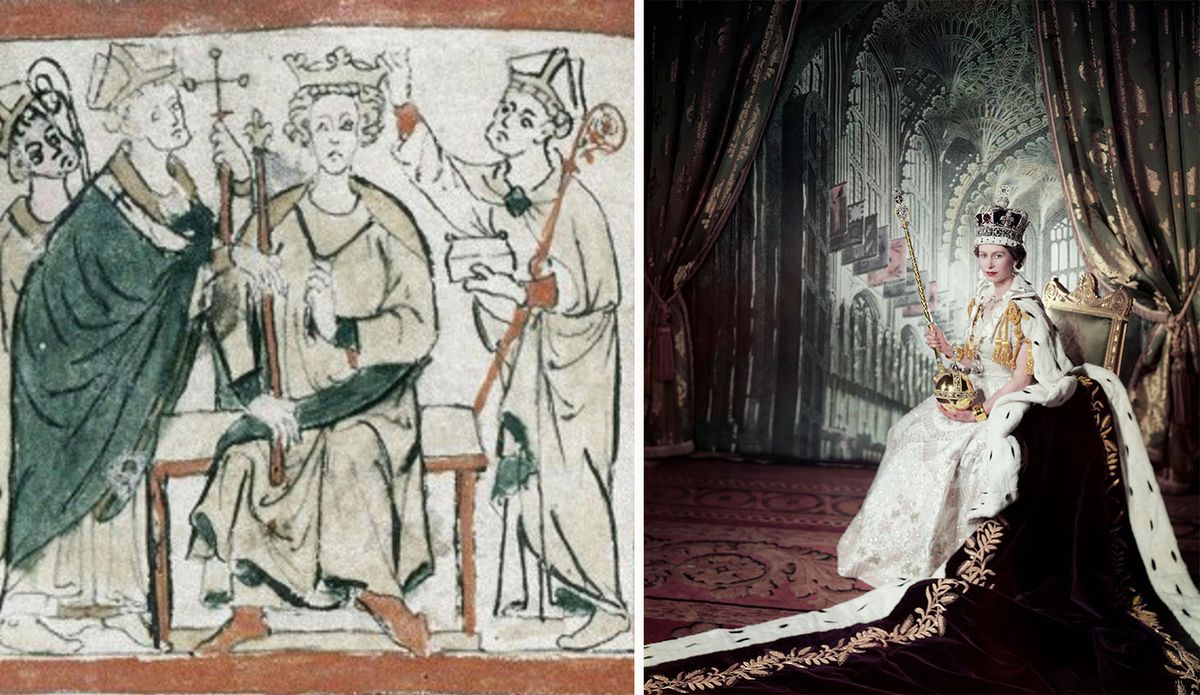The coronation of English, later British, monarchs has been a mutable rite, concocted out of a thousand years of grafting religious ritual on to pre-Christian practices. At the centre is the codified figure of the sovereign, around whom ancient ceremony and regalia are adapted and embroidered to fit the national mood or dynastic concerns of an ever-modernising royal family.
The helmets and swords of Saxon kings are transmuted into crowns and sceptres, indisputable badges of royal rank and title, and passed from generation to generation like the batons in a relay race. New trappings and furnishings are woven into the theatrical performance: thrones and canopies and gold state coaches ritualised as the emblems of a constitutional monarchy. But the formal imagery of kingship, and king and queen-making, follows the prescriptions of an icon painting, with the jewelled halo of the Crown at the centre of every portrayal, from Tudor panel painting to Andy Warhol’s screen-prints.

Matthew of Westminster, Coronation of Edward the Confessor, 1042 (around 1300). Ink drawing on parchment. MS. Laud Misc. 572, © Bodleian Libraries, University of Oxford. History and Art Collection / Alamy Stock Photo
The coronation of Edward the Confessor, 1042
Edward the Confessor, Saxon king of England and Christian saint, lends holiness to the dynastic monarchy that came after him. This image of his crowning in 1042 at Winchester —seat of the West Saxon kings—was made a century later, with the hindsight of his canonisation by the pope. Seated between two bishops he wears King Alfred’s [sic] crown "of gold wirework set with precious stones and with little bells" (as Oliver Cromwell’s council described it six centuries later, when they melted this dangerous symbol of the divine right of kings back into golden ore). King Edward had begun building Westminster Abbey as his tomb and chantry chapel: as Saint Edward it became his shrine housing his holy relics and kingly apparel, the abbey’s precious property to hold for all future coronations. Two decades after Cromwell’s destruction of the Confessor’s regalia, Charles II had some of these sacred objects, potent with associative symbolism, remade—and with these Charles III will be crowned.
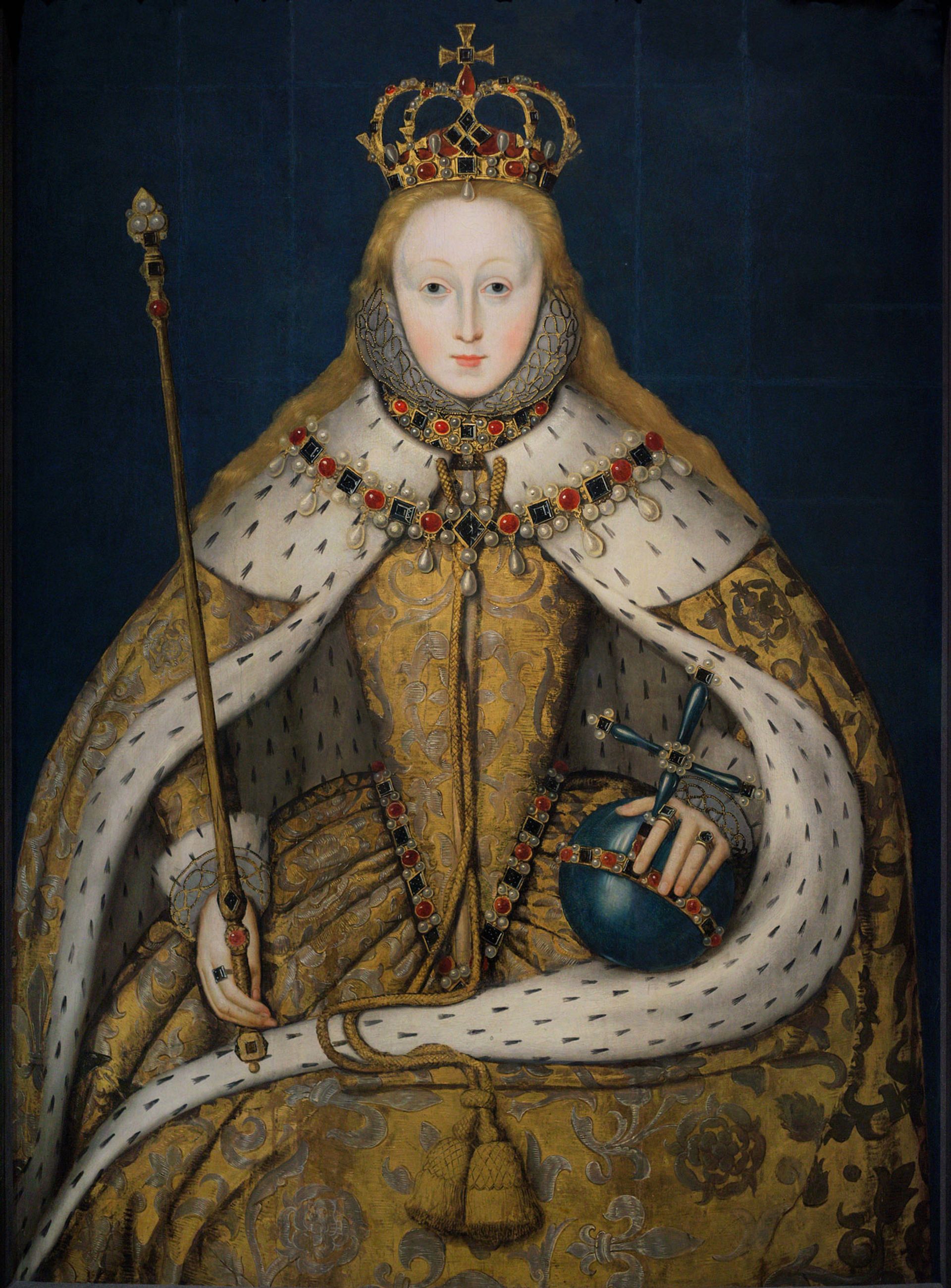
Anonymous, The Coronation Portrait of Elizabeth I, around 1600 (after an original of 1559). National Portrait Gallery. Photograph: Prismo Archivo/ Alamy Stock Photo
Queen Elizabeth I's "Coronation portrait"
Elizabeth Tudor’s coronation was a fairly perfunctory one. Her few remaining bishops refused to take part, and in 1559 she was crowned by a solitary Bishop of Carlisle, Owen Oglethorpe, wearing the borrowed robes of the Bishop of London, on the date chosen as auspicious by her court astrologer Dr Dee, rather than a saint’s day. In this icon-like coronation portrait she may be wearing the ‘personal’ crown made for her late sister Queen Mary, encrusted with rubies and pearls and with a single pearl droplet over her brow, her mantle of cloth of gold and silver richly symbolic with dynastic Tudor roses and trimmed with ermine, her hair hanging loose in an allusion to maidenly purity. According to one onlooker she seemed hugely more cheerful and relaxed once the ceremony was over.
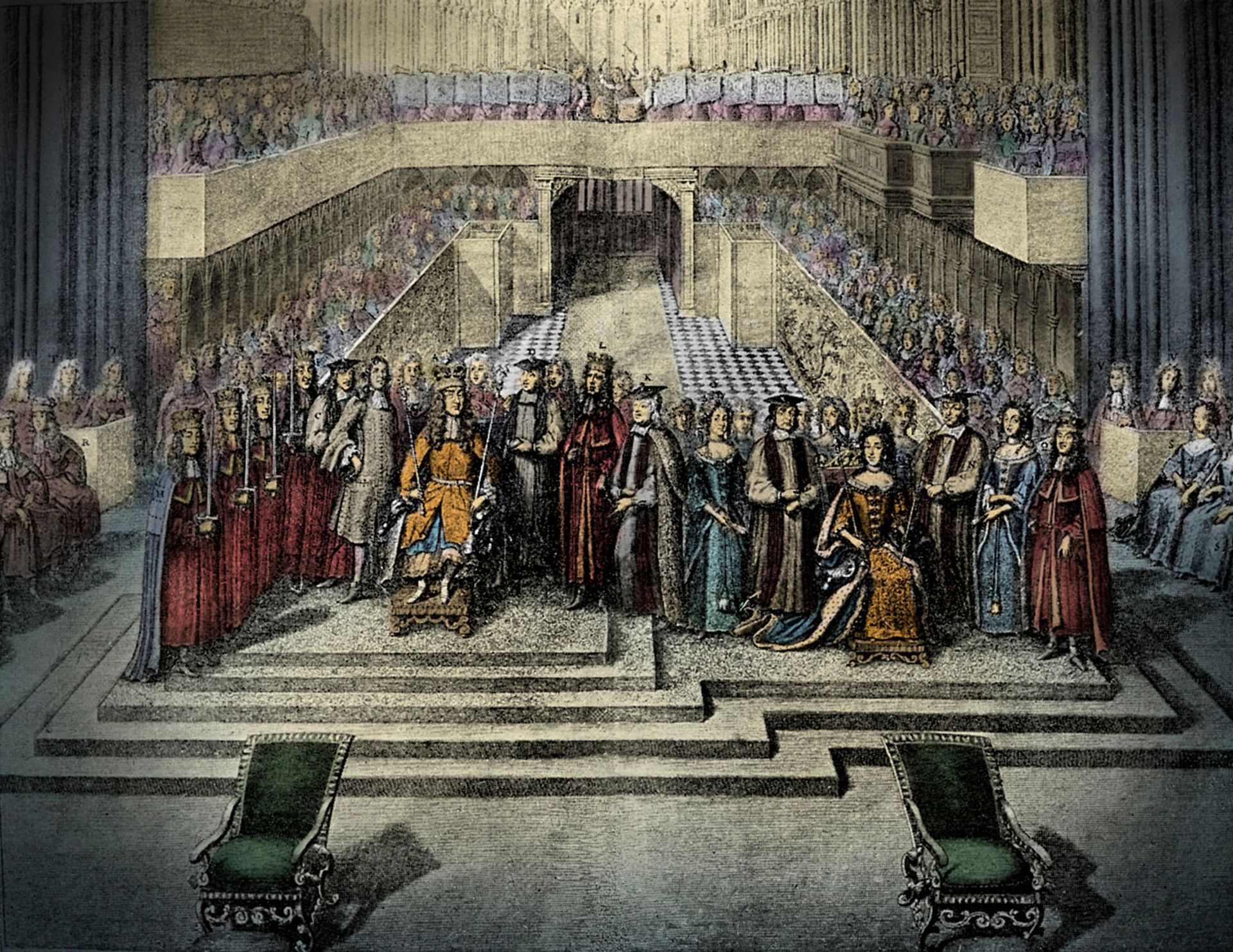
Coronation of James II, 1687, by Francis Sandford
By the reign of James II the coronation was metamorphosing into a great stage-managed Baroque spectacle. Continuity was key, with the royal heralds and the Earle the Marshall of England upholding the protocols devised for Charles II, including the use of his regalia and King Edmund’s throne. At the king’s command the genealogist and Lancaster Herald Francis Sandford made these records of each stage of the ceremony and even the individual likenesses of the key players, published as The Coronation of James II, in 1687. Each nook and cranny of the abbey is crammed with spectators, with scaffolds and galleries standing against the aisles and crossings and in the churchyard and surrounding streets. Revenues from the seats at this great theatrical spectacle went to the abbey and its staff.
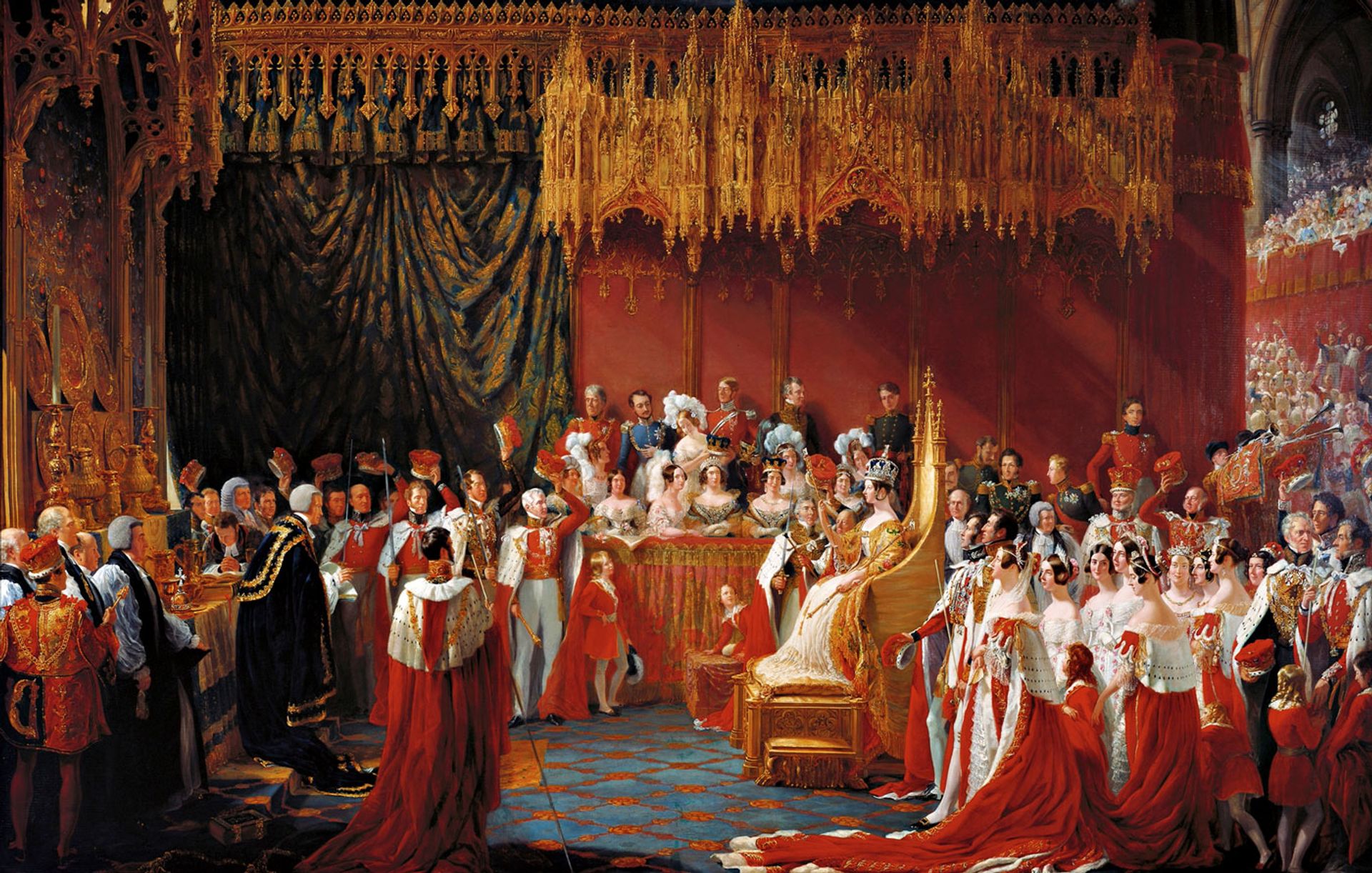
George Hayter, The Coronation of Queen Victoria in Westminster Abbey, 28 June 1838 (1839) Royal Collection Trust / © His Majesty King Charles III 2023
Queen Victoria's coronation, 1838, by George Hayter
As well as her sometime drawing master George Hayter's commissioned depiction of the ceremony, we have Queen Victoria’s own, unique, visual account of her coronation day. The queen's devoted prime minister Lord Melbourne had devised her processional route taking in the London streets so that the newly enfranchised populace could feast their eyes on—and fall in love with—their 19-year-old queen. Victoria sketched vignettes from the day in pencil and watercolour, giving particular attention to her own prettily styled ringlets and the moment of her crowning. They are collected in a Recollections of the Coronation album in the Royal Collection. Although Melbourne had arranged a rehearsal, the ceremony was chaotic, with the elderly archbishop painfully jamming her coronation ring onto the wrong finger. Even so, it brought tears to Melbourne’s eyes.
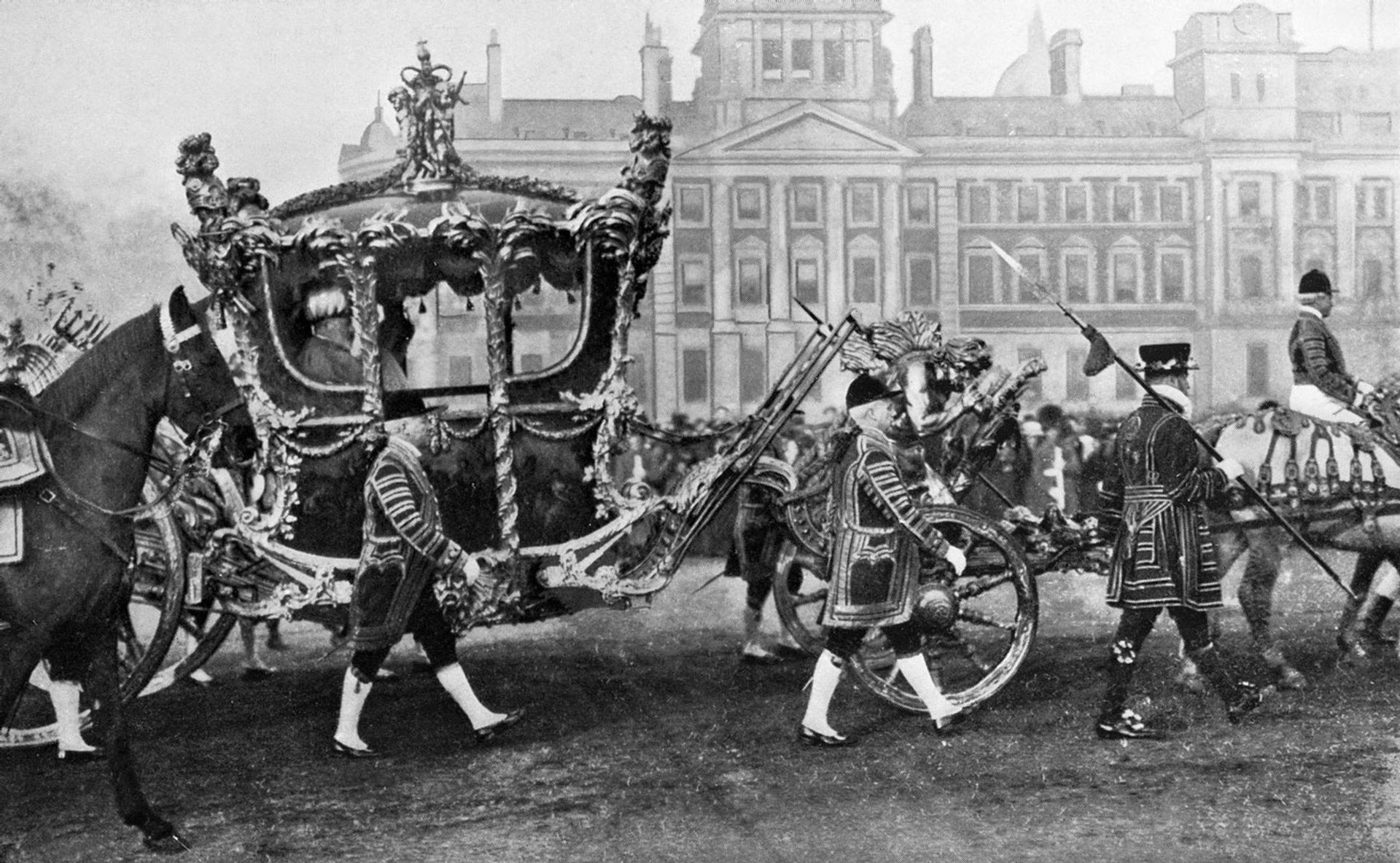
King Edward VII, seated in the Gold State Coach, processes through the streets of London on the day of his coronation, 1902 Heritage Image Partnership Ltd / Alamy Stock Photo
King Edward VII in his coronation coach, 1902
In a reinvention of the state entry into London used by Charles II, Edward VII travelled in a vast cavalcade designed to showcase Imperial might. In the up-to-date medium of photography we see him driving to Westminster Abbey in the Gold State Coach, first used in a coronation (for William IV) in 1831, one of the conscious historical anachronisms on which such ceremony depends. But the king was still weak from recent illness and surgery and so, breaking with precedent, he was crowned by Archbishop Temple with the lighter Imperial State Crown, which he mistakenly placed back to front on the king’s head. Patriotic students from the Wye Agricultural College cut a giant crown into the into the Kentish chalk hillside using the template of the Confessor’s crown from a silver florin, to mark the event.
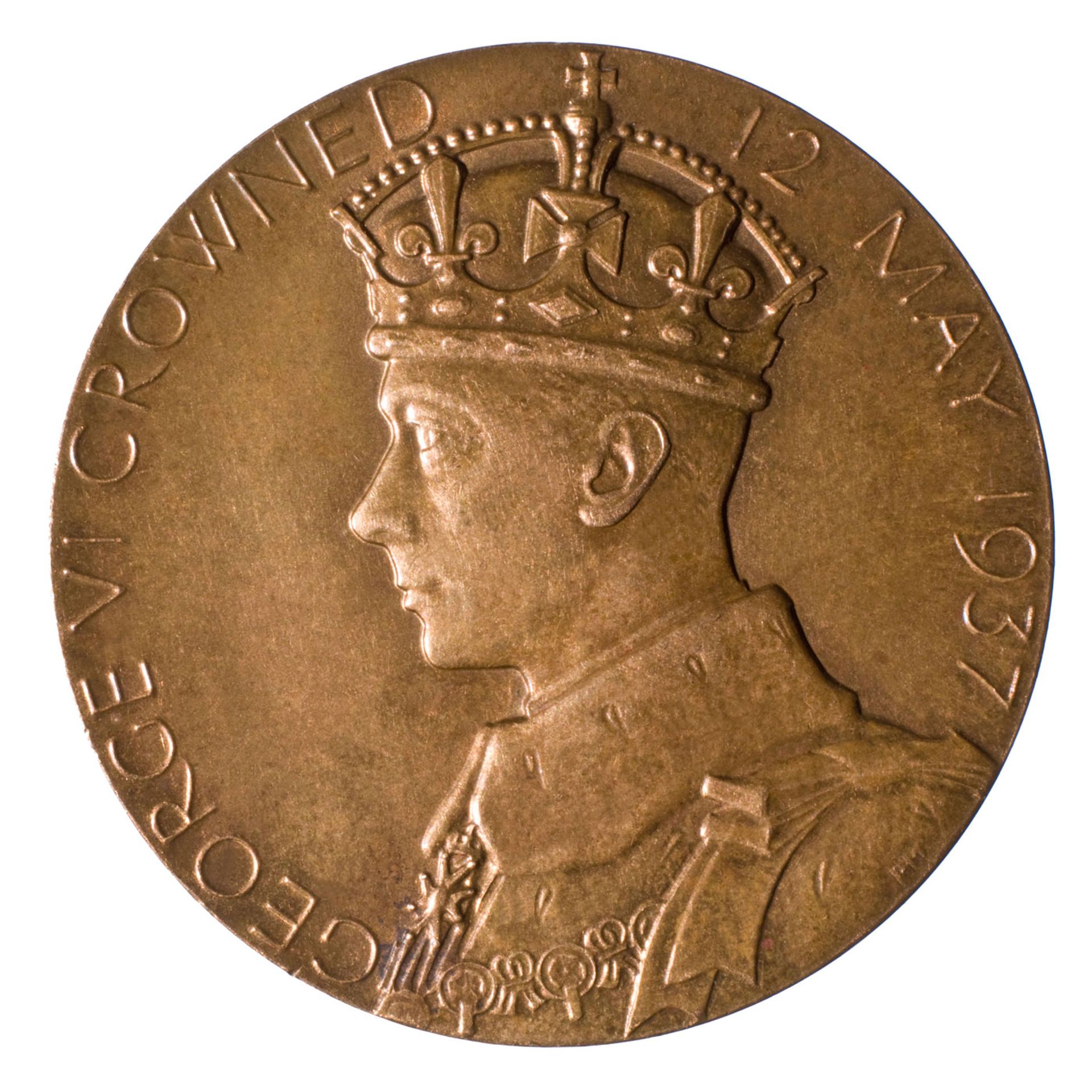
Coronation medal of George VI, 1937, by Percy Metcalfe
Following the abdication crisis of Edward VIII, King George VI and Queen Elizabeth were crowned on 12 May 1937, the date originally scheduled for his brother’s Coronation. Thousands tuned into the ceremony on the radio or travelled to London to line the streets and there was a huge demand for affordable souvenirs such as this medal issued by the Royal Mint. It was made in gold, silver or copper and features modernist yet timelessly reassuring "continuity" profiles of the king and queen, he wearing Charles II’s replica of Edward the Confessor’s crown.
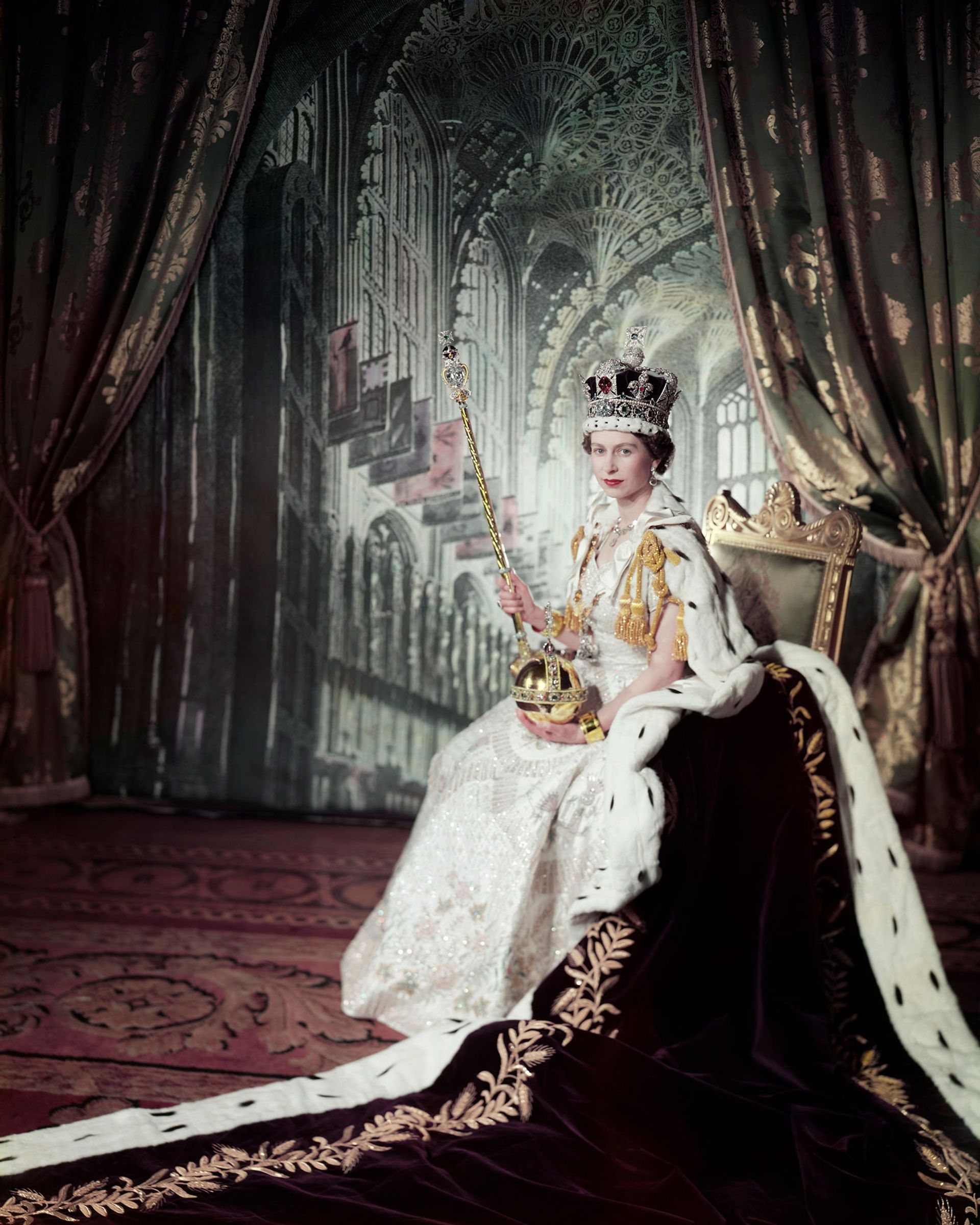
Cecil Beaton, Queen Elizabeth II on her Coronation Day, 1953 Royal Collection Trust / © His Majesty King Charles III 2023
Queen Elizabeth II, coronation photograph by Cecil Beaton
Posed in her Norman Hartnell-designed gown, Queen Elizabeth II’s 1953 Coronation portrait by Cecil Beaton has a dewy, film star allure, but her regal props of robe, sceptre, orb and the Imperial State Crown uphold dynastic tradition. Her crowned profile is still ubiquitous, on our coinage, stamps, and the commemorative ceramics and biscuit tins, mass produced in their thousands as souvenirs along with miniature diecast models by Matchbox and Lesney of the jolting, antiquated Gold State coach and its team of horses that carried her to the abbey.


